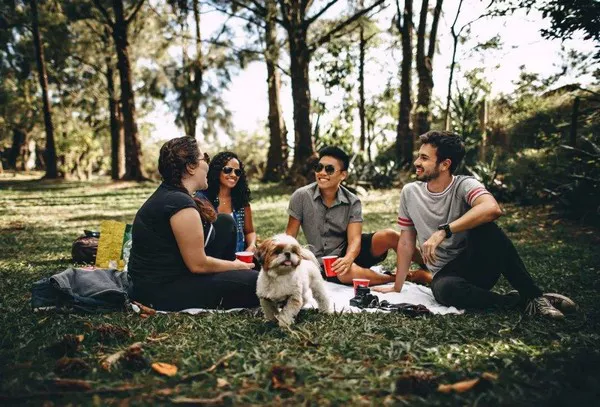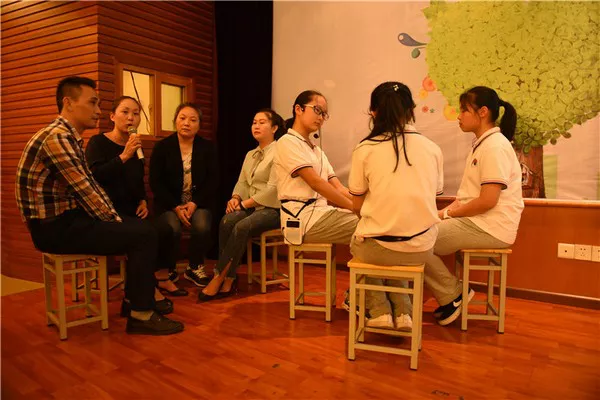Friendship, a cornerstone of human connection, often begins with a simple yet meaningful conversation. Whether you’re looking to make new friends or deepen existing connections, knowing how to start a friendship conversation can be a valuable skill. In this guide, we will explore various strategies and tips to initiate conversations that pave the way for genuine and lasting friendships.
Approaching the Opportunity for Friendship
Starting a friendship conversation begins with recognizing opportunities for connection. This can happen in various settings, from social gatherings and community events to workplaces or online platforms. Pay attention to cues such as shared interests, mutual acquaintances, or common activities, as these can serve as natural conversation starters.
In social settings, be open to meeting new people and approach situations with a friendly demeanor. Remember that the first step toward friendship is often a simple exchange of words, and being receptive to opportunities is key to initiating meaningful conversations.
Breaking the Ice with a Warm Greeting
A warm greeting sets the tone for a friendly conversation. Whether you’re meeting someone for the first time or reconnecting with an acquaintance, starting with a friendly “hello” and a genuine smile creates an inviting atmosphere. A positive and approachable demeanor can ease tension and make the other person feel comfortable, laying the foundation for a potential friendship.
Consider adding a personal touch to your greeting by mentioning something specific about the environment or context. For example, if you’re at an event, you can say, “Hello! I couldn’t help but notice your enthusiasm for shared interest. Mind if I join you?”
Finding Common Ground
Establishing common ground is a powerful way to spark a friendship conversation. Shared interests, experiences, or circumstances provide a natural foundation for connection. Look for cues in the environment or through casual observation to identify potential points of connection.
Once you’ve identified a shared interest, use it as a conversational anchor. For example, if you both enjoy a particular hobby or have a shared experience, you can initiate the conversation by saying, “I noticed you’re into shared interest. I’m a big fan too! Have you been involved in it for long?”
See Also: How to turn friendship into romance?
Using Open-Ended Questions
Open-ended questions are instrumental in steering a conversation toward more meaningful exchanges. Instead of asking questions that elicit simple “yes” or “no” responses, opt for inquiries that invite the other person to share more about themselves. This opens up the conversation, creating an opportunity for deeper connections.
For instance, instead of asking, “Did you have a good weekend?” you could say, “How was your weekend? Anything exciting or interesting happen?” This encourages the other person to share details and allows the conversation to flow more naturally.
Active Listening and Responding
Active listening is a fundamental skill in fostering connections. Pay close attention to what the other person is saying, show genuine interest, and respond thoughtfully. Acknowledge their contributions to the conversation, and don’t be afraid to share your own thoughts or experiences related to the topic.
Reflective responses, such as paraphrasing what the other person said or asking follow-up questions, demonstrate your engagement and contribute to a more dynamic and interactive conversation. Active listening lays the groundwork for a friendship by creating a sense of mutual understanding and appreciation.
Sharing Personal Stories
Sharing personal stories is a powerful way to deepen a friendship conversation. Vulnerability and authenticity play key roles in building connections, and opening up about your own experiences can encourage the other person to do the same. Be mindful of the context and gradually share stories that align with the flow of the conversation.
For example, if the conversation turns to travel, you could share a memorable experience from a recent trip. This not only adds a personal touch to the conversation but also provides an opportunity for the other person to relate and share their own stories.
Expressing Genuine Compliments
Compliments, when genuine and thoughtful, can contribute to a positive and uplifting conversation. Offering a sincere compliment shows that you are attentive and appreciate the other person. Keep compliments specific and related to the current context to make them more meaningful.
For instance, you might say, “I noticed your passion for shared interest, and I really admire your dedication. It’s refreshing to meet someone who is so enthusiastic about it.” Genuine compliments create a positive atmosphere and foster a sense of appreciation in the conversation.
Suggesting Future Plans
As the conversation progresses, consider suggesting future plans or activities that align with your shared interests. Proposing a casual get-together, attending an event together, or collaborating on a shared project are excellent ways to transition from a conversation to the prospect of forming a lasting friendship.
For instance, you could say, “I’ve really enjoyed our conversation. How about grabbing a coffee sometime next week? I’d love to continue our discussion about shared interest.” Suggesting future plans demonstrates your interest in maintaining the connection beyond the initial conversation.
Building Consistency and Following Up
Consistency is key in developing and sustaining friendships. After initiating a conversation, make an effort to follow up and maintain contact. This could involve sending a friendly message, expressing appreciation for the conversation, or simply checking in on how the other person is doing.
For example, you might send a message like, “It was great talking with you the other day. I’d love to catch up again soon. How about grabbing lunch next week?” Consistent communication builds trust and reinforces the foundation of the friendship.
Navigating Rejections Gracefully
Not every conversation will lead to a deep and lasting friendship, and it’s important to navigate rejections gracefully. If the other person is not receptive to further connection or expresses disinterest, respect their boundaries and respond with understanding. Rejections are a natural part of social interactions, and handling them with grace ensures that both parties feel respected.
You might say, “I really enjoyed our conversation, and I appreciate your honesty. If you ever change your mind and want to connect, feel free to reach out. Take care!” This response acknowledges the rejection while leaving the door open for future possibilities.
Conclusion
Initiating a friendship conversation is an art that involves warmth, genuine interest, and effective communication. By approaching opportunities with openness, breaking the ice with a warm greeting, finding common ground, using open-ended questions, actively listening and responding, sharing personal stories, expressing genuine compliments, suggesting future plans, building consistency, and navigating rejections gracefully, you can create connections that have the potential to evolve into meaningful and lasting friendships.
Remember that the journey to forming friendships is unique for each individual, and not every interaction will lead to a deep connection. Approach conversations with authenticity, enjoy the process of getting to know others, and cherish the connections that naturally flourish. Friendships often begin with a simple conversation, and by mastering the art of initiation, you can create a ripple effect of positive and enriching connections in your life.
Related topics:




























